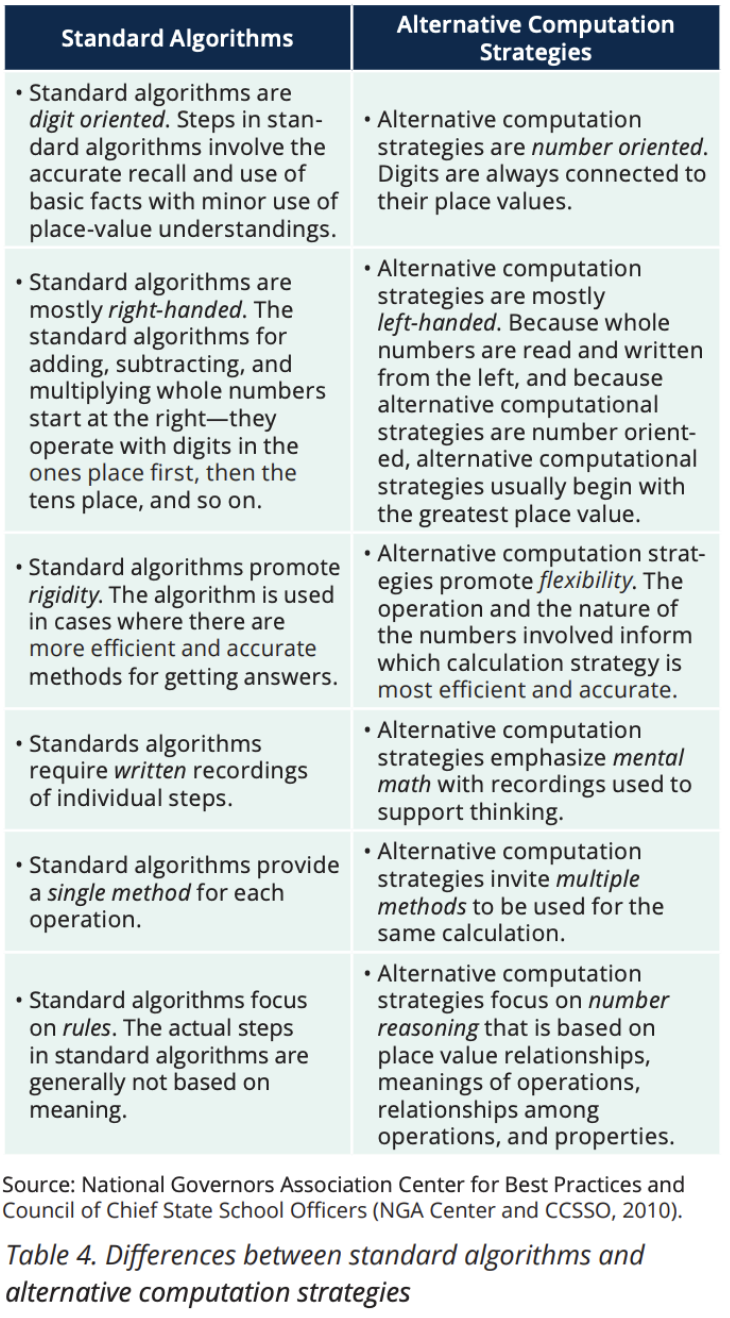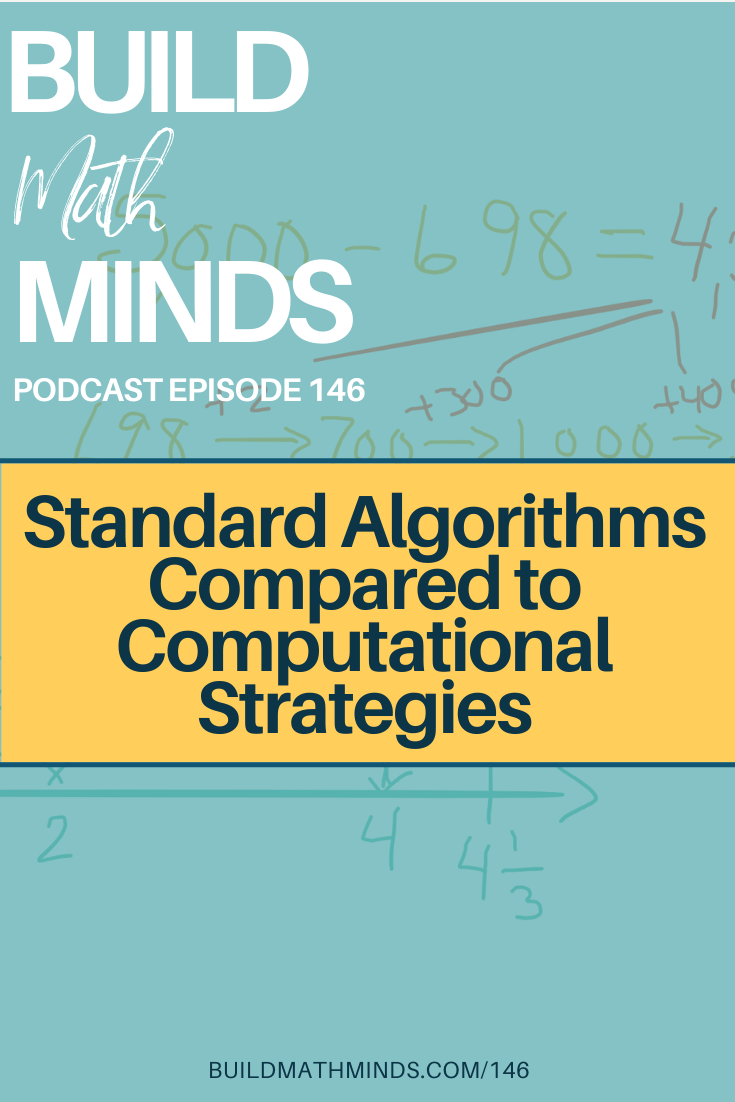Resources mentioned in this episode:
A New Vision for Developing Addition and Subtraction Computation Strategies By Randall Charles
Enroll in The Flexibility Formula Course
Welcome fellow Recovering Traditionalists to Episode 146. Today let’s take a look at Standard Algorithms Compared to Computational Strategies.
As you can tell I’m on a kick about talking about math fluency. The last two episodes I’ve shared about what computational fluency is and how textbooks have gone wrong in their ‘teaching’ of fluency.
Growing up, fluency to me meant being good at the algorithm. Being able to follow the steps that the teacher laid out for students was the sign of being fluent.
As textbooks have introduced all these new strategies, it often confuses students because there are now multiple ways they have to learn instead of just one. This is often why parents get mad about all these new ways. Their child is confused and the parent didn’t learn that way so it’s hard for the parent to help their child.
I know I would have been that kind of parent if I hadn’t had all the training I’ve had. I was very much a traditional learner and only knew the traditional algorithms.
So in today’s episode I wanted to share this chart I found in the article A New Vision for Developing Addition and Subtraction Computation Strategies By Randall Charles because it highlights the importance of letting kids use strategies instead of just the traditional algorithm.
I’ll post the visual over on the show notes, buildmathminds.com/146, but I’d like to read to you the differences between Standard Algorithms and Computational Strategies.

To summarize that chart, traditional algorithms for addition & subtraction, and even multiplication and division, only require knowledge of single-digit facts and are very much about following a set of rigid steps and rules.
Computational strategies require students to understand place value, have number sense, and use reasoning to solve problems.
If you were like me, you were taught the traditional algorithms and your math education was NOT focused on building your understanding of place value, number sense, and reasoning…so it’s hard to do that for your students.
I know it was for me.
That’s one of the reasons I created my online PD courses for elementary teachers. The Flexibility Formula courses build your understanding of numbers so that you can then help your students do the same. It’s all the things I WISH I had known about numbers back when I was in school.
It is so hard to help build your students’ flexibility with numbers if you don’t have that flexibility with numbers. We teach the way we were taught. So to change the way your students interact with math, you’ve got to change the way you interact with math.
My teaching didn’t change until my understanding of numbers changed.
I only knew the rules and procedures. I had memorized all my facts. So, that’s what I had my students do. Even when my district bought a ‘reform’ curriculum that had all these alternative strategies, I still taught those strategies as rules and procedures that my students had to memorize.
I didn’t focus on building their number sense and place value to help them actually understand those strategies.
It wasn’t until I attended trainings that built my number sense and read research about how children develop their mathematical understanding that I started to change my teaching. What I’ve learned about developing kids’ number sense and their fluency in my 20+ years in education is inside The Flexibility Formula courses.
There is a course for K-2nd grade teachers and one for 3rd-5th grade teachers. If you are interested in diving deep into building your own flexibility with numbers so that you can help your students build their flexibility with numbers, go to buildmathminds.com/enroll to enroll in a course.
Whether or not you take a Flexibility Formula course, this episode is to remind you about the purpose of those alternative strategies. They are NOT meant to be taught as procedures to be followed. Alternative strategies naturally develop in students when they have an understanding of place value and have built their number sense.
So focus on that with your students and you will see them develop their own strategies that make sense to them.
Until next week my Fellow Recovering Traditionalists, keep Building Math Minds.
These episodes are sponsored by the online trainings that I do for elementary educators. Registration for The Flexibility Formula K-2 and 3rd-5th is now open. These courses help you understand the foundation of number sense, how number sense builds kids’ flexibility with numbers, and how that impacts their ability to become fluent with the mathematics at your grade level. Go to buildmathminds.com/enroll to learn more about each course and get enrolled.




